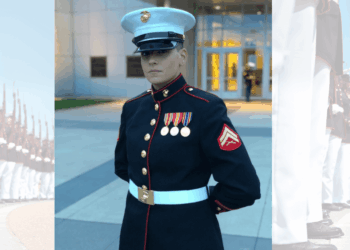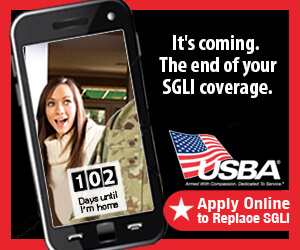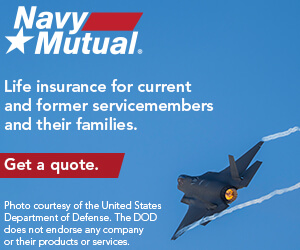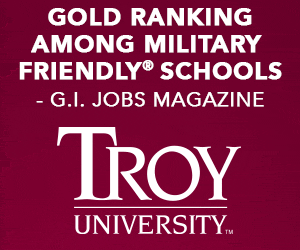Video interviews have become more common for today’s job seekers. How to ace this new technology and land the job you want.
Are you looking to transition from the military to a civilian career or preparing to re-enter the workforce after an extended break? Crafting an attention grabbing resume and delivering a killer 30-second elevator pitch may no longer be enough to land your dream job. Acing a video interview may be the new key to success.
A 2015 survey of corporate executives by talent acquisition company Korn Ferry Future step found that 71% of companies are using real-time video interviewing in their recruitment process, with half of those surveyed using virtual interviews as a way to narrow the candidate pool.
Navy veteran Philip Dana, vice president, talent acquisition, for nonprofit The Honor Foundation, expects video interviewing to continue to increase in popularity among employers. “Video interviewing is definitely growing, especially for companies of size that need to whittle down the front end of the talent tunnel quickly and keep candidates from getting lost in the block hole of automated application systems,” says Dana, whose resume includes positions leading military talent acquisition at Intuit and Amazon.
Video interviews are typically Skype-style question-and-answer sessions or one-way recordings with job seekers answering automated pre-scripted questions. In the latter case, selling yourself to a prospective employer requires understanding how to perform on camera when talking in two-minute sound bites to a webcam.
“When you do a digital interview, you are the Hollywood star,” says digital communication expert Paul Bailo, author of The Digital Interview Handbook. “You are the soundtrack person, audio person, teleprompter and lighting person. You have to be aware of the number of hats you are wearing.”
After a break from the workforce, Navy spouse Sally McQuarters Faiella was looking to return to her career as a Delta flight attendant when the airline’s video interviewing round knocked her out of contention for a return to the skies.
“I’m not quite sure what they were looking for…I applied at the same time for a different job within Delta and I received that job, beating out 700 applicants,” she says. “But I didn’t have to do a [one-way] online interview for that job.”
Faiella admits the automated one sided process threw her off.
“When you have eye contact with people and you can smile and gauge their reactions to what you are saying, it’s a lot more encouraging,” she says. “You feel a lot more comfortable. Not having that, I felt very stiff.
Financial services firm PwC added video interviewing to its recruiting toolbox about three years ago. Rod
Adams, PwC’s U.S. recruitment leader, says video interviewing widens the candidate pool by enabling interviews to take place anytime and anywhere, a plus for transitioning military and military spouses.
“That flexibility is important,” says Adams, whose recruiters use only live video interviewing. “It allows us to get to candidates faster. We’re not trying to schedule times to meet in person, which slows down the offer process. And our interviewers have come to find you don’t lose anything versus an in-person interview. You are able to make eye contact, read body language. You are able to build a relationship through video very similar to the way you build it in person.”
For transitioning military, however, building on-screen rapport can be more difficult. Dana says service members tend to maintain strict “military bearing” during video interviews, making it harder to “make that personal connection with the human being on the other side of the technology.”
“I typically coach veterans to smile twice as much as you normally would,” he says.
Navy spouse Frances Brown did a series of digital interviews with Hilton Worldwide before landing jobs as a work-from-home reservation agent — and a Military Spouse Ambassador, who represent Hilton at military job fairs. She is thrilled to see virtual interviewing becoming mainstream.
“With our lifestyle in the military, the ability to be able to interview at home is great,” she says. “I literally had my babysitter walk my kids to the neighborhood park two minutes before my interview started. It was so convenient.”

Tips for nailing an online interview:
Be tech savvy
Understand the technology being used. HireVue, for example, is a popular video-interviewing platform used by companies such as GE, ConocoPhillips, Honeywell, Hilton and Geico. Read instructions carefully and navigate the website ahead of time. When recording a one-way interview, know in advance whether you can re-record responses or face a time limit.
Test your systems
Verify your computer network connection. Make sure your laptop is fully charged, or better yet, plugged in. Check that your webcam is working and all other programs on your computer are closed.
Dress the part
“Eighty-five to 90% of your preparation for a video interview is going to be no different than if someone is across the table from you,” says Mike Arsenault, vice president of candidate services for military job placement firm Bradley-Morris. “Dress to impress. We have heard that first impressions are everything so it is vital you are dressed appropriately and look the part. Business attire for ladies; business suits for gentleman. Neat hair style, minimal accessories.”
Eliminate distractions
Barking dogs, music and children playing in the background are obvious situations to avoid. Butblogger and digital media strategist Kristen Smith says other sounds such as a ceiling fan or noisy laptop can be distractions as well. “It may be things you don’t realize, which is why testing is so important,” says Smith, an Army spouse.
Aim for the “Triangle of Love”
Paul Bailo, author of The Digital Interview Handbook, recommends positioning your webcam so it focuses on an area extending from the top of the head to the left and right shoulders, or what he calls the “triangle of love.” Because so many job candidates do poorly in video interviews, Bailo contends, “A digital interview is more about how you look and how you sound than what you say.”
Complete a screen test
A full dress rehearsal is the best way to ensure your outfit looks good on camera, the webcam angle is flattering and the background adds to the image you want to project. “It isn’t enough to just turn on your
camera,” Smith says. “Get on a call with a friend or family member, and test your background as well. It is amazing what a difference it will make if you put yourself in a setting that echoes your professionalism.”
Do your research
Find out the common interview questions for the position you are seeking, which often can be found on www.Glassdoor.com. “Write out answers to the questions you think you are going to be asked — your biggest weakness, your strength,” says Seattle career counselor Robin Ryan, author of “60 Seconds & You’re Hired!” “Practice your 60-second sell, which is your top five selling points linked together in a couple sentences.”
Dana believes veterans can stand out by asking questions that highlight their analytical skills and show their passion for the job and industry they are seeking to enter.
“The worst thing you can do when the hiring manager asks, ‘Do you have any questions for me?’ is to say, ‘No, everything has been answered. Thank you so much,’ No matter what you did in the past hour, you just shot yourself in the foot,” he points out.
With potentially hundreds of applicants vying for every job opening, Dana says military members also should pay attention to the “smaller details” that often get overlooked by their civilian counterparts.
Dress professionally, research prospective employers thoroughly and write thank you cards — even after interviewing virtually.
“At the end of the day, it is a competition,” Dana explains, “so every little thing you can do along the way, whether the interview is an automated process or not, could set you apart and be the tipping point that shows you have what they are looking for versus everyone else.”
Read comments












































